Facing a cost of living crisis has caused many to reevaluate their finances. As such, it's never been more important to demonstrate the benefits of independent school education. But how can the website be used to promote value?
Demonstrating the value of an independent school education
Independent schools are facing a huge challenge.
A plethora of price hikes, most notable being the rising cost of energy, has driven school fee inflation once again.
According to data collected by School Fees Checker, as of September 2022, this equated to fees being 5.1% higher than the previous year.
Additionally, Sir Keir Starmer’s plans to introduce VAT on school fees should Labour win the next election, will be yet another proverbial ‘nail in the coffin’.
These heightened pressures surrounding the affordability of an independent school education will inevitably push some prospective parents to seriously consider a state-school alternative.
And why not?
With the sector seeing significant improvements in quality in recent years, it’s a tempting choice.
So with this in mind, it’s never been more important to outline the values of an independent school education and why, even in the face of adversity, it’s worth the investment.
Afterall, independent Schools are renowned for many things.
Whether it’s the allure of smaller class sizes, outstanding academic results or the unique opportunities offered co-curricularly; the benefits are wide-reaching.
In this blog post, we look at how these key elements that epitomise an independent school education can be harnessed to provide a rich, engaging website experience that drives school admissions.
Academic excellence
For many, academic success is expected as a prerequisite of choosing an independent school education.
But nonetheless, it’s still an intrinsic part of your school’s value proposition and should be communicated on the website.
Whilst outlining exam results in a table, or downloadable .pdf ‘does the job’, having something that’s more designed and eye-catching is far more befitting of projecting your academic success.
Christ’s Hospital showcase results in their At a glance… feature, which seamlessly combines image, graphics and content for a truly engaging experience.
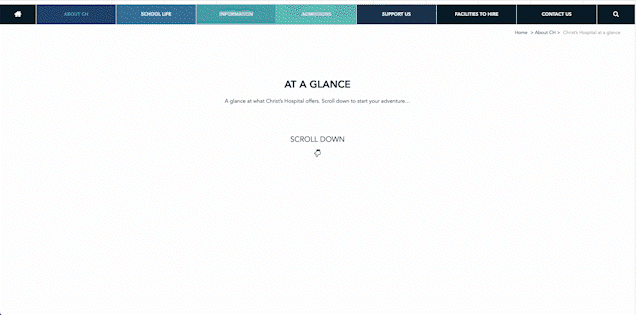
For something a little more bite size, animated stats counters provide content-rich visuals that can be used to break up or accompany heavy content, much like this example from Cheltenham College.

Ultimately, these elements can be utilised to foster a culture of aspiration amongst potential pupils and their families.
Showcase your amazing facilities
Whether your school sits in the shadow of Edinburgh Castle, like George Heriot’s, or includes an Olympic sized swimming pool, independent schools often boast awe-inspiring facilities.
Cited by some as being a crucial element in ‘the arms race in education’, your school’s facilities have the power to differentiate you from your competitors and attract a more diverse niche of students.
They’re a very important tool in your independent school’s arsenal.
Take The Leys, for example.
Sport is a crucial element of the educational experience that they offer, and as such its state-of-the-art sports facilities are an integral part of demonstrating the worth of being part of The Leys School community.
But how is this communicated through the website?
Via Explore the Leys, a sleek, engaging interactive map feature that provides an illustrated, aerial view of the school, which allows users to discover different elements of the school’s grounds and click for more detailed information.
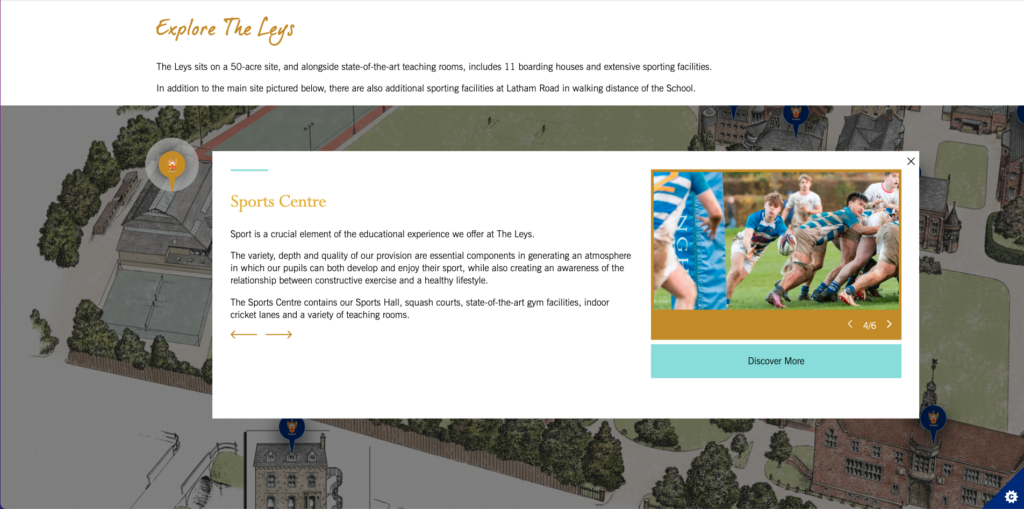
You can even go a step further like Christ’s Hospital with a 360° Virtual Tour that offers a real-world glimpse into key areas of the school, much like the swimming pool shown below.
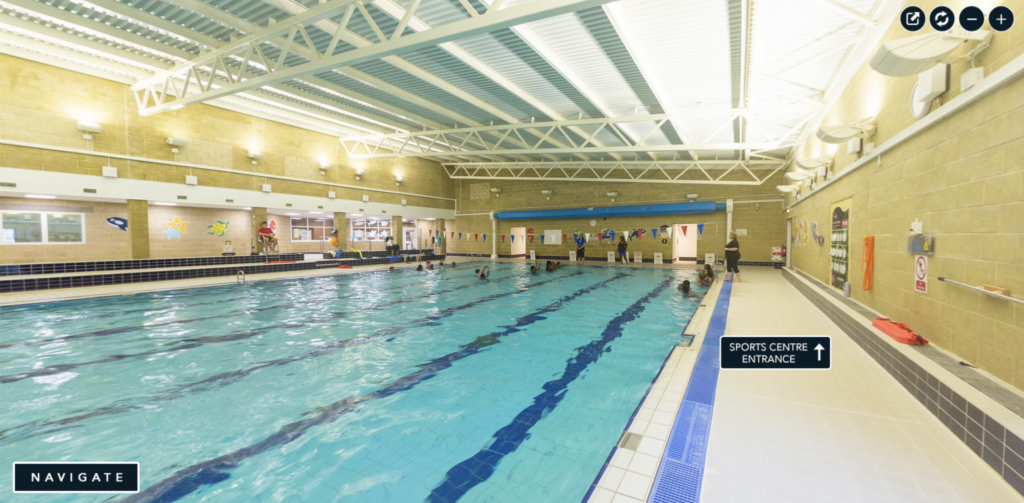
A Bespoke Curriculum
Perhaps one of the most prominent benefits of independent school education over state school counterparts, is the flexibility to teach freely beyond the National Curriculum.
This equates to a wider range of subjects on offer, such as Latin, psychology, art classics etc.
A Subjects or Curriculum page is therefore ideal to communicate the school’s academic portfolio – and provide signposting to content that elaborates on the subject itself.
Instead of an uninspiring text list, consider icon-led signposting like HPPC below.
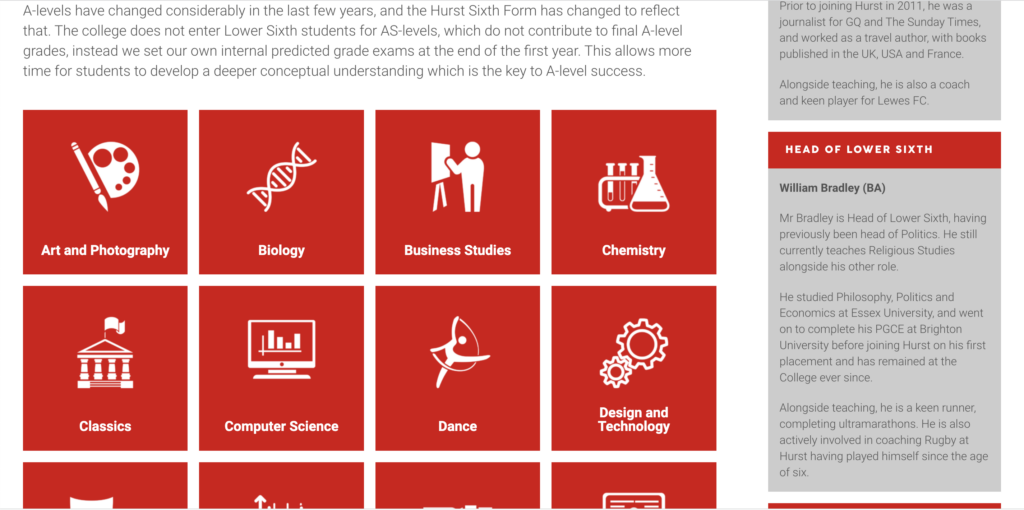
Alternatively, use emotive imagery that captures the essence of the school, to support your signposting, with a pop-up of more extensive content on the subject, like Beechwood Park below.
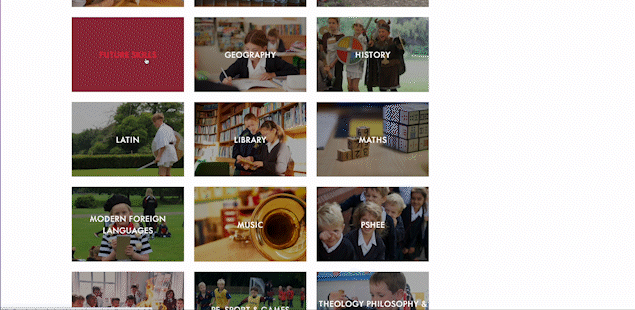
Extra-curricular activities
For independent schools, there’s as much emphasis on activities outside the classroom as there is within it.
Referred to as extra-curricular, co-curricular or beyond the classroom, these activities are designed to work alongside and enrich the learning experience.
As before, each school will offer a different mix of these opportunities, which diversifies its value proposition.
Geneva English Schools showcase their catalogue of extra-curricular activities by utilising an online, brochure style template that deviates from their standard website content pages.
This gives users a far more attractive glimpse into what the school has to offer co-curricularly and contains clear, concise CTAs to more content, such as booking information and image galleries.
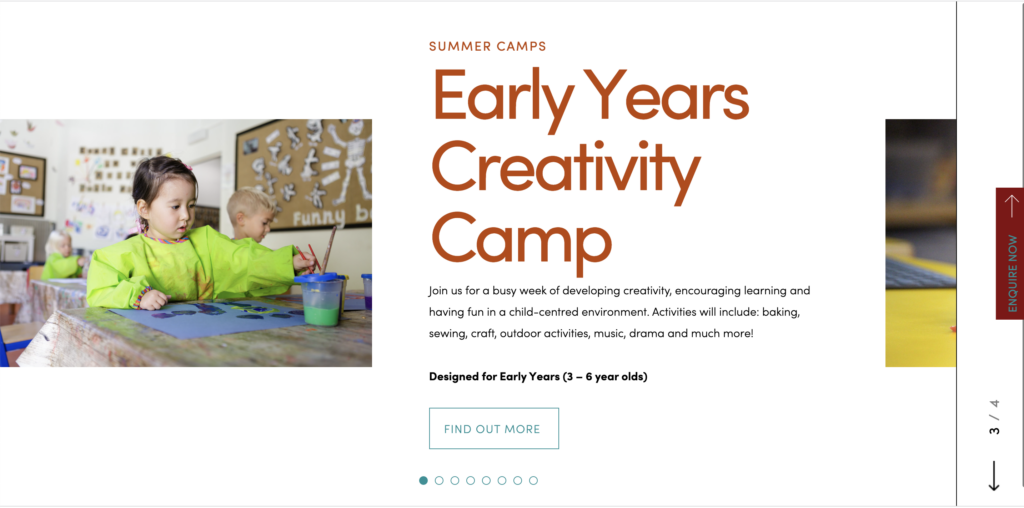
Pastoral care, the key to happy students
The emotional health and wellbeing of a student is a key factor in creating an environment where students can thrive.
Happy students are not only successful learners, they can also become some of the biggest advocates for your school.
This makes Pastoral Care such an integral component of your independent school and is an extremely attractive quality for prospects.
Many school websites have sections dedicated to this provision, including content that supports the school’s dedication to the welfare of its students – often accompanied by excerpts and testimonials from parents and students alike.
Others, like Godolphin and Latymer, weave this throughout the narrative and user journey.
The sixth form section in particular, understanding that its core audience will likely be a prospective student, embodies a bolder, more vibrant style that deviates from the core website pages.
Using emotive imagery and video of happy students, testimonials and ample signposting to Support and Wellbeing orientated content, it really does emanate the warmth and nurturing of the G&L community.
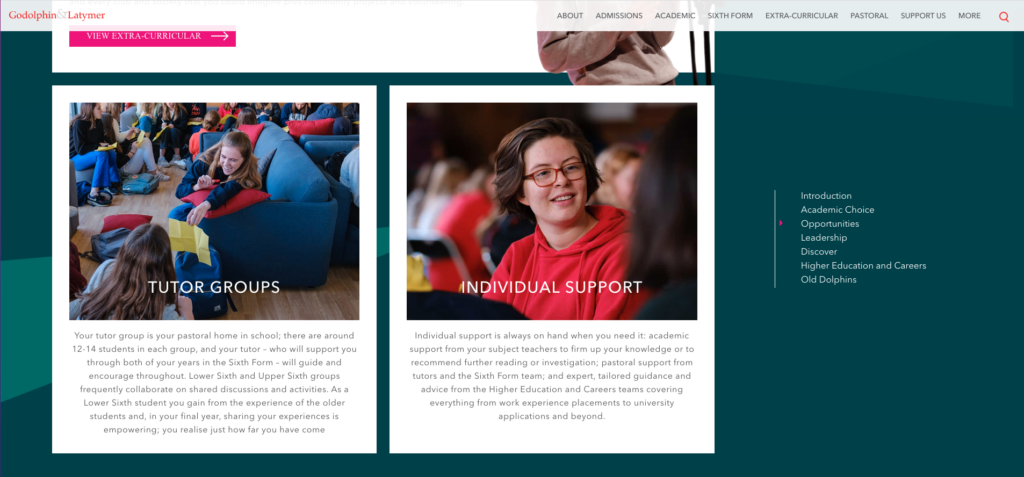
Happy students become engaged Alumni
Following on from pastoral care, past students who have had a positive experience at the school become willing alumni.
Still actively engaging with the school beyond their school years, they’re a personification of a positive, educational experience.
Which is why an active community of alumni is a fantastic reflection of the value that an independent school can offer.
Alumni that go on to be successful in their careers become role models and a rich-resource for advice, life-experience and expertise to current students.
A dedicated sub-site, or area of the website dedicated to alumni is therefore a great way to celebrate and promote the success of former students as well as piquing the interest of aspiring prospects.
Therefore a dedicated alumni section on the website, or subsite is a great feature here.
Old Dolphins for example, Godolphin and Latymer alumnae have a dedicated section on the website rich with news and resources that can be utilised by past and present students alike.
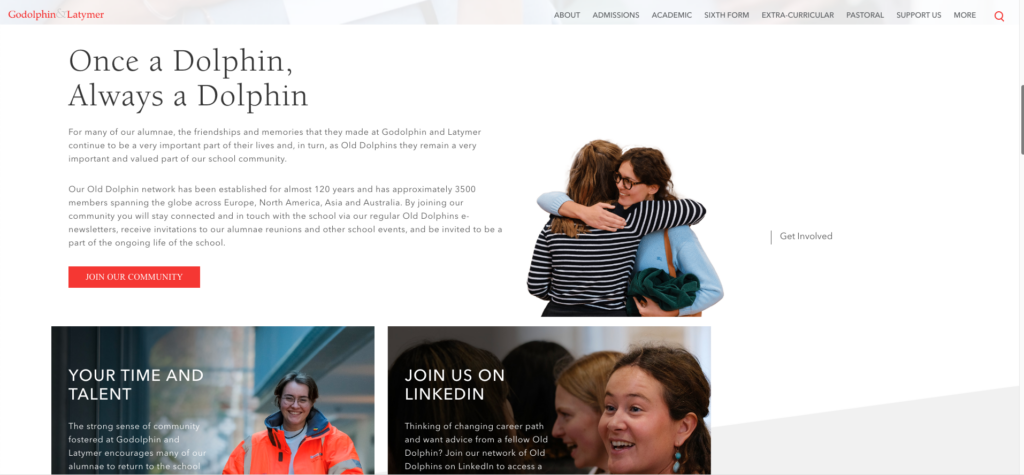
Our takeaways
Whilst it is true that escalating costs are pricing some families out of an independent school education, there seems to be somewhat of a paradox afoot.
Even when taking into consideration an above inflation rise in school fees, there is still a consistent number of UK pupils in private education.
Perhaps due to the sector’s commitment to scholarship and bursaries, a key factor concerning accessibility and affordability of an independent school education.
But, this doesn’t negate the need for school’s to be proactive.
And like many of the challenges faced before – there is almost certainly a ‘light at the end of the tunnel’
Whether through effectively communicating value propositions by implementing features like those discussed in this article.
Or aiming to drive down fees by identifying and implementing more sustainable initiatives that will reduce the organisation’s costs as a whole.
Both work hand in hand to guide schools through the stormy seas of the current socio-economic climate.
